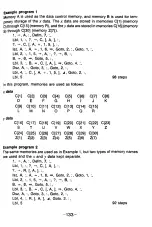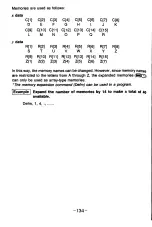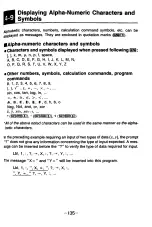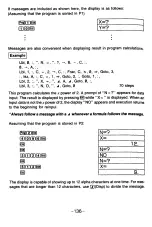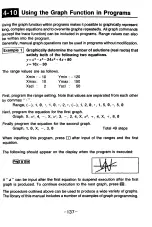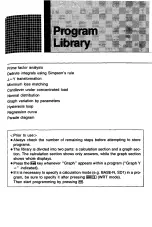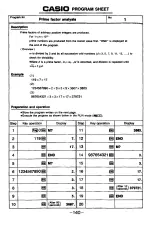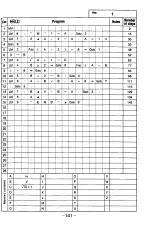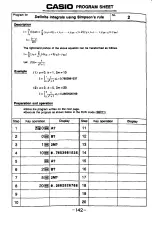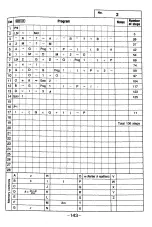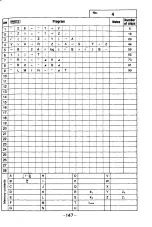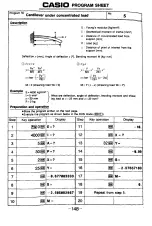
The following shows a case in which array-type memories overlap with standard
format memories. This situation should always be avoided.
Example Store the numeric values from 1 through 5 in memories A[1]
through A[5] respectively.
5,
C,
Lbl, 1,
C,
A, [, C, ], :,
Dsz, C,
Goto, 1,
A, [, 1 ,],
A
, A, [, 2, ],
A,
A, [, 3, ],
A,
A, [, 4, ],
A,
A, [, 5, ]
44 Steps
In this program, the values 1 through 5 are stored in the array-type memories
A [1] through A [5], and memory C is used as a counter memory. When this pro
gram is executed, the following results are obtained:
[p^ilfolfixEl
d §
dED
m
d §
As can be seen, the second displayed value (which should be 2) in A[2] is incor
rect. This problem has occurred because memory A[2] is the same as memory C.
A
B
C
D
E
F
A[1]
A[2]
A[3]
A[4]
A[5]
The content of memory C (A[2]j is decreased from 5 to 0 in steps of 1.
Therefore, the content of memory A[2] is displayed as 0.
3.
4.
■Application of the array-type memories
It is sometimes required to treat two different types of data as a single group. In
this case, memories for data processing and those for data storage should be
kept separate.
Example Store data x and y in memories. When an x value is input, the
corresponding y value is displayed. There will be a total of 15
pieces of data.
- 1 3 2 -
Summary of Contents for FX-6300G
Page 1: ...CASIO SA0911C Printed in Taiwan U S Pat 4 410 956 HDC00380E1 W30 ...
Page 2: ...GRAPHIC SCIENTIFIC F X 6300G O w n e r s manual ...
Page 4: ...graphic sc ien tific fx 6300G ...
Page 152: ... 1 5 4 ...
Page 157: ... program for No Step Key operation Display 1 5 9 ...
Page 167: ... 1 7 0 ...
Page 168: ...Function Reference Error Message Table Input Ranges of Functions Specifications ...
















